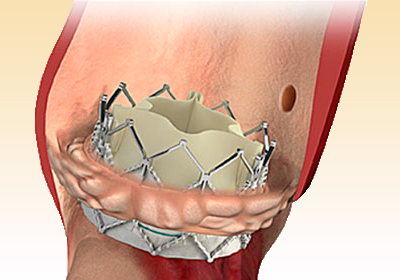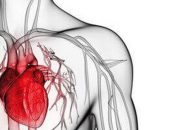Severe mitral valve insufficiency (MI) has been associated to the progressive deterioration of left ventricular function, cardiac and kidney failure, and increased mortality. Complete medical treatment at maximal doses and surgery are indicated. For those at high risk or those with ventricular function deterioration, edge-to-edge repair has been shown an excellent alternative. The use of…
QFR Analysis of Coronary Lesions with TAVR
While transcatheter aortic valve replacement (TAVR) has shown benefits, significant coronary artery disease affects 50% or more of patients who undergo such procedure. However, it is still unclear which is the best treatment strategy or how to handle this condition. Quantitative flow ratio (QFR) could be a non-invasive option to assess the severity of coronary…
TAVI in Horizontal Aorta: Neo2 vs. Sapien Ultra
There are controversies regarding transcatheter aortic valve implantation (TAVI) in cases of challenging anatomical complexity, such as horizontal aorta (HA). This is primarily because aortic angulation (AA) impacts the procedure differently depending on the valve type used. As previously studied, angulation complicates crossing, implantation, and coaxial positioning with commissural alignment. In the study presented by…
Low-Flow Aortic Stenosis: What is the Value of Valve Calcification in its Interpretation?
Delays in the treatment of symptomatic aortic stenosis (AS) reduce prognosis, especially in elderly patients. Accurate assessment of AS severity is crucial to avoid overtreatment and its associated risks. A transthoracic echocardiogram (TTE) is the initial evaluation in the diagnostic algorithm, and severity values are well established. However, some patients may obtain discordant data due…
TAVR vs SAVR in Los Risk Patients: 10-Year Outcomes of the NOTION Trial
Transcatheter aortic valve replacement (TAVR) has revolutionized the treatment of patients with severe aortic stenosis (AS). Randomized studies have shown the benefits of TAVR in patients at prohibitive surgical risk, as well as high and intermediate risk. The NOTION trial (Nordic Aortic Valve Intervention Trial) randomized patients with low risk severe AS to TAVR and…
Third Generation Balloon-Expandable and Self-Expanding Valves: TAVR Meta- Analysis
TAVR’s significant advance has driven the development of valve technology, which is currently in its third generation. Even though outcomes have improved, randomized studies are yet to compared balloon-expandable (BEV) vs self-expanding (SEV) valves in randomized studies, and we only have information from different analysis with contradicting conclusions. This was a meta-analysis of 16 studies…
EuroPCR 2024 | Self-Expanding Valves (ACURATE Neo2) vs. Balloon-Expandable Valves (Sapien 3 Ultra): 1-Year Follow-up Results
Comparing different transcatheter heart valves (THVs) is necessary to obtain relevant information that facilitates the selection of the appropriate valve for each patient. A previous study compared early outcomes between the self-expanding ACURATE Neo2 valve and the balloon-expandable Sapien 3 Ultra valve. However, there are no comparative data on these two valves in the medium…
EuroPCR 2024 | OBSERVANT II: TAVR in the “Real World”
This study analyzed 2,493 “real world” patients, 1,352 receiving the Evolut R/Pro, 675 the SAPIEN, 3,270 the Acurate Neo and 192 the Portico. Primary end point was all cause mortality and major adverse cardiovascular events (MACE) at 5 years. Populations were similar, with EuroSCORE 4.9%, and there were no significant differences in comorbidities or echocardiographic…
EuroPCR 2024 | SOLVE-TAVI: Self Expanding or Balloon Expandable Valves?
This was a randomized study with 447 patients carried out to compare the 5-year evolution of TAVR using Evolut R and SAPIEN 3, as well as general anesthesia vs. conscious sedation. Randomization was in two stages: first valve selection and later the anesthesia technique, that is, conscious sedation vs general anesthesia. The populations were similar.…
Aortic Stenosis Progression Evolution
Aortic stenosis is an increasingly common valvulopathy because people are living longer now. A present, the main treatment consists of surgical (SAVR) or transcatheter aortic valve replacement. (TAVR). One of the main challenges of this disease is its progression. The European guidelines recommend Doppler echocardiograms every 2 to 3 years for mild cases, mildly calcified,…
Quality of Life in Medium-Risk Patients Treated with TAVR vs SAVR
Transcatheter aortic valve replacement (TAVR) and surgical aortic valve replacement (SAVR) have demonstrated similar outcomes in symptomatic aortic stenosis patients (at high or intermediate risk) in terms of 5-year survival. When evaluating the quality of life (QoL) of these two treatment strategies in patients with high surgical risk, there were no significant differences at 5…







